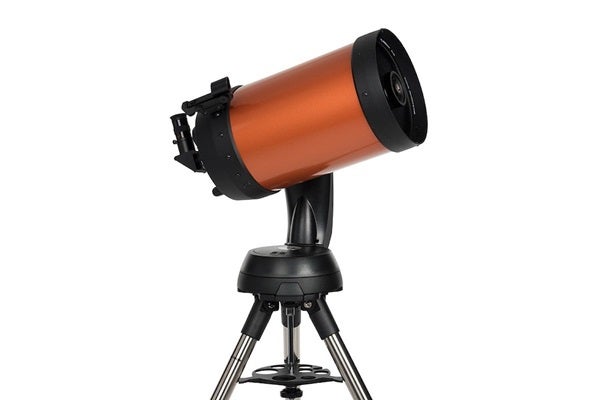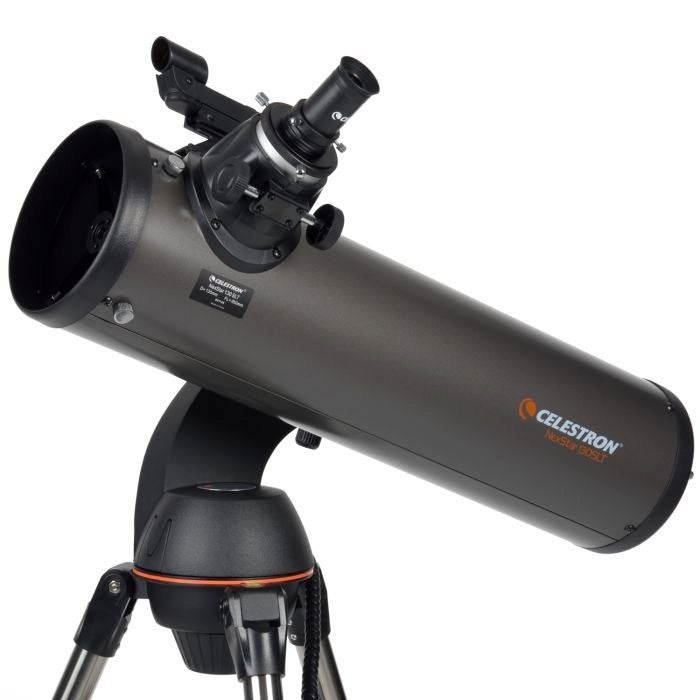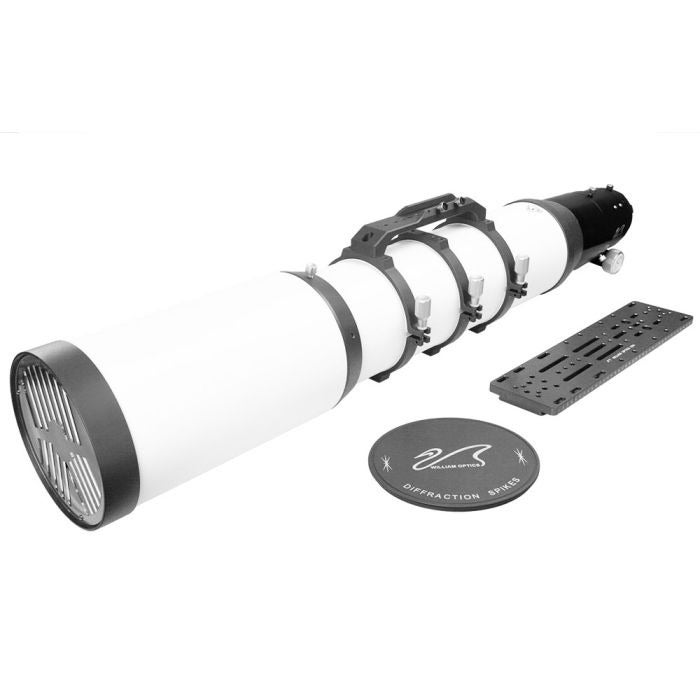
Note: This post contains affiliate links. When you buy a telescope through the links on this page, we may earn a commission.
To truly dive into the depths of the night sky, a good telescope isn’t just helpful—it’s essential.
Whether you’re a beginner eager to catch your first glimpse of Saturn’s rings or a seasoned stargazer looking to explore astrophotography, the right telescope can transform your astronomical experience.
In this article, we’ll list some of the best telescopes currently available at High Point Scientific, plus explore the most important factors to consider when purchasing a new telescope. From the role of aperture size to the importance of mount type, we’ll arm you with the knowledge you need to make an informed decision.
How we made our picks
To make our selections, we considered user reviews, and expert opinions from the Astronomy staff, who together have decades of stargazing experience. We considered factors such as ease of use, optical quality, smartphone compatibility, and overall value for your money.
The Celestron NexStar 8SE computerized telescope
- Features and benefits: This cutting-edge telescope offers automated tracking and a large aperture, making it suitable for both beginners and seasoned enthusiasts. The computerized GoTo mount greatly simplifies locating celestial objects.
- Why we like it: The NexStar 8SE features sophisticated technology, and its ease of use makes it an appealing option for a wide range of users.
- What to keep in mind: This is a more advanced and pricier model, making it a significant investment. There are also 6-inch and 4-inch models available.
- Product details:
- Type: Schmidt-Cassegrain
- Mount: Motorized GoTo
- Aperture: 8 inches (203.2mm)
- Focal length: 80 inches (2032mm)
- Price: $1,589.95
Sky-Watcher Esprit 80mm APO Triplet Refractor
- Features and benefits: The Sky-Watcher Esprit 80mm APO Triplet Refractor is renowned for its superb imaging and optical performance, making it a top choice for astrophotography and detailed observations. It’s particularly adept at capturing detailed images of the Moon, planets, and wide-field celestial objects, ensuring vibrant and contrast-rich views.
- Why we like it: This telescope stands out for its exceptional clarity and color correction, thanks to the high-quality triplet apochromatic (APO) lens design, which minimizes chromatic aberration and delivers sharp, color-accurate views. It’s compact and lightweight, making it an excellent option for astronomers on the go or those with limited space.
- What to keep in mind: While offering outstanding optical quality, its aperture may not capture as much light as larger reflectors, which could limit visibility of fainter deep-sky objects.
- Product details:
- Type: Refractor
- Mount: Suitable for altazimuth and equatorial mounts
- Aperture: 3.15 inches (80mm)
- Focal length: 17.7 inches (400mm)
- Price: $1,699.00
Celestron 130mm AstroFi Wireless Newtonian

- Features and benefits: The Celestron 130mm AstroFi integrates traditional reflecting optics with modern tech for simplified celestial targeting and tracking. The wireless operation with a smartphone app further enhances user experience.
- Why we like it: This telescope provides a seamless stargazing experience, combining ease of use with robust optical capabilities.
- What to keep in mind: The initial alignment process might be challenging for novices, requiring some patience to master.
- Product details:
- Type: Reflector
- Mount: Altazimuth
- Aperture: 5.1 inches (130mm)
- Focal length: 25.6 inches (650mm)
- Price: $559.95
Sky-Watcher Flextube 300Pi SynScan GoTo Dobsonian
- Features and benefits: This scope offers superior deep-space viewing capabilities thanks to its large 12-inch aperture. It is designed for capturing bright, detailed images of distant celestial objects.
- Why we like it: Its large aperture provides clear and detailed views of deep-space objects. The collapsible design makes it especially easy to store and transport for such a large scope.
- What to keep in mind: The size and complexity of the Sky-Watcher Flextube 300 Pi Syn Scan might be overwhelming for some beginners.
- Product details:
- Type: Dobsonian
- Mount: Altazimuth
- Aperture: 12 inches (305mm)
- Focal length: 47 inches (1200mm)
- Price: $2,405.00
William Optics FLT 156 6-inch Fluorostar APO Triplet Refractor

- Features and benefits: Known for its exceptional clarity and sharpness, this telescope is designed for the serious astronomer and astrophotographer. The high-quality optics minimize chromatic aberration.
- Why we like it: It provides superior image quality and is built with high-end materials, offering both durability and performance.
- What to keep in mind: It’s a significant investment, best suited for experienced users with a dedicated interest in astrophotography. A mount is not included.
- Product details:
- Type: Apochromatic Triplet Refractor
- Mount: Cradle-style mounting and dovetail plate included
- Aperture: 6.14 inches (156mm)
- Focal length: 47.9 inches (1217mm)
- Price: $8,198.00
Vaonis Vespera II Smart Telescope
Related: Read our in-depth review of the Vespera II
- Features and benefits: The Vaonis Vespera II Smart Telescope combines the capabilities of a telescope and a camera, offering a unique astrophotography experience. It’s compact, lightweight, and easy to use, making it perfect for both beginners and experienced stargazers. With its automated tracking and imaging system, capturing stunning images of the night sky has never been easier.
- Why we like it: This all-in-one observation station is revolutionary for its ease of use and the quality of images it can produce, even in light-polluted areas. The Vespera II makes astrophotography accessible to everyone, without the need for complex setups.
- What to keep in mind: The Vespera II comes with a premium price tag, reflecting its advanced technology and capabilities. Also, its relatively small aperture might not satisfy those looking for deep-sky observations.
- Product details:
- Type: Refractor
- Mount: Computerized Altazimuth
- Aperture: 1.97 inches (50mm) with integrated imaging sensor (3840×2160 pixels)
- Focal length: 9.84 inches (250mm)
- Price: $1,590.00
Celestron Advanced VX 8-inch GoTo Telescope
- Features and benefits: The Celestron Advanced VX 8-inch Schmidt-Cassegrain offers a great balance between portability and power. With an 8-inch aperture, it provides excellent clarity and detail for both planetary and deep-sky observations. The Advanced VX mount is designed for superior tracking accuracy and stability, perfect for long exposure astrophotography.
- Why we like it: This telescope provides advanced features and excellent optics at a relatively affordable price point. It’s also versatile, suitable for both visual observing and astrophotography.
- What to keep in mind: The setup can be more complex and time-consuming than with simpler mounts. It’s also relatively heavy, so it may not be the best option if portability is a priority.
- Product details:
- Type: Schmidt-Cassegrain
- Mount: Advanced VX Equatorial
- Aperture: 8 inches (203.2mm)
- Focal length: 80 inches (2032mm)
- Price: $2,299.00
Important things to consider when buying a new telescope
Understanding the most important elements that contribute to a telescope’s performance can significantly enhance your stargazing experience. Let’s break down the essential factors:
- Aperture size: The heart of any telescope is its aperture, the diameter of its main optical component (lens or mirror). A larger aperture captures more light, which translates into clearer, brighter images and the ability to observe fainter objects. This is particularly important for deep-sky observing, where larger apertures can help reveal intricate details of distant galaxies and nebulae.
Related: 15 essential things to know about telescopes
- Telescope type: Telescopes come in three types: refractors, reflectors, and compound telescopes. Refractors (which use lenses) are known for their sharp, contrast-rich images and are great for lunar and planetary viewing. Reflectors (which use mirrors) offer larger apertures at a lower cost, ideal for deep-sky observing. Compound telescopes provide versatility and portability, excellent for those with varied interests and limited space.
- Mount type: A stable mount is crucial for tracking celestial objects as they move across the sky. Altazimuth mounts are straightforward and easy to use, making them perfect for beginners. Equatorial mounts, while more complex, are great for long-exposure astrophotography and detailed celestial tracking, making them popular among more experienced users.
- Portability: Consider how and where you plan to use your telescope. If you envision frequent stargazing trips to remote locations, a portable and easy-to-assemble telescope is basically a must. On the other hand, if you prefer backyard observations, you might opt for a larger, more permanent setup.
- Budget: Telescopes can range from less than $100 to $10,000+. That’s why it’s important to set a realistic budget that reflects your level of commitment and interest in astronomy. Investing in a slightly more expensive telescope can offer a significantly better viewing experience, but it’s crucial to balance cost with features and potential usage.









